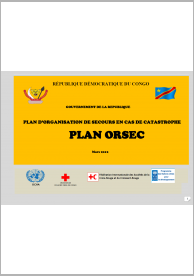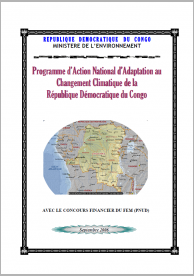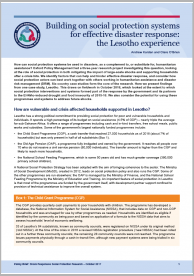
This Strategy is divided into nine priority axes which are:
The following is a list of all conten labeled as "Governance"

This Strategy is divided into nine priority axes which are:

The ORSEC PLAN is intended to be a first step and a very important step in the perspective of the constitutional response to the question of national emergencies, constituting for the government a first-hand tool allowing it, not only, to know who is responsible for what task in case of which circumstance, but also the modality of activation of it and the coordination of intervention activities

The objective of the NAPA Project to be proposed by the DRC is to develop a program covering the whole country and identifying urgent and immediate adaptation activities which respond to the current and anticipated harmful effects of climate change, including extreme events.

Creates the civil protection council (CPC) under the Ministry of the Interior.

This activity report summarizes activities of Result Area 5, also known as the Africa Disaster Risk Financing (ADRF) Initiative from July 1, 2017 to June 30, 2018.The report provides an overview of the achievements to date and identifies upcoming priorities and challenges.

The National Country Assessment aims to provide the Government of Madagascar and national partners interested in these subjects with an information base to better know and understand the link that exists in the country between migration and environmental changes, including climate change.

The progress report assesses current national strategic priorities with regard to the implementation of disaster risk reduction actions, and establishes baselines on levels of progress achieved with respect to the implementation of the HFA's five priorities for action.

Poverty Reduction Strategy Papers (PRSPs) are prepared by member countries in broad consultation with stakeholders and development partners, including the staffs of the World Bank and the IMF.

The overall objective of the contingency plan is to support the Comorian government in order to set up a real-time and coordinated response in order to minimize the humanitarian consequences of disasters on the populations.
The following strategic objectives constitute the basic interventions planned under this contingency plan:

How can social protection systems be used in disasters, as a complement to, or substitute for, humanitarian assistance? Oxford Policy Management led a three-year research project investigating this question, looking at the role of social protection in both mitigating the impact of large-scale shocks and supporting households after a crisis hits.